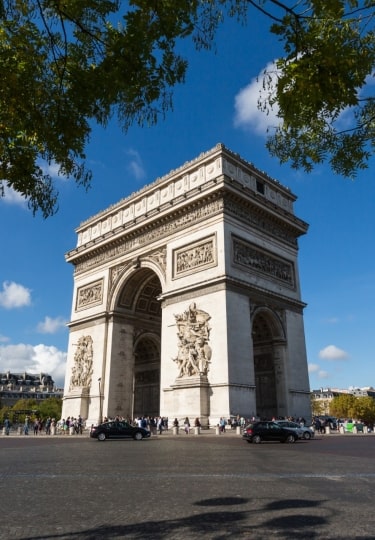France teems with history. The country you see as modern-day France dates back to the Middle Ages, with civilizations living here long before even that.
Over the centuries, France has fought wars with the English, Habsburgs, Habsburg Spain, Germany, and others for territorial sovereignty. As such, the country is rich in castles, palaces, fortifications, medieval town centers, and legends.
Peel back the layers of time and explore these 17 intriguing historical places in France.
Nice’s Old Town
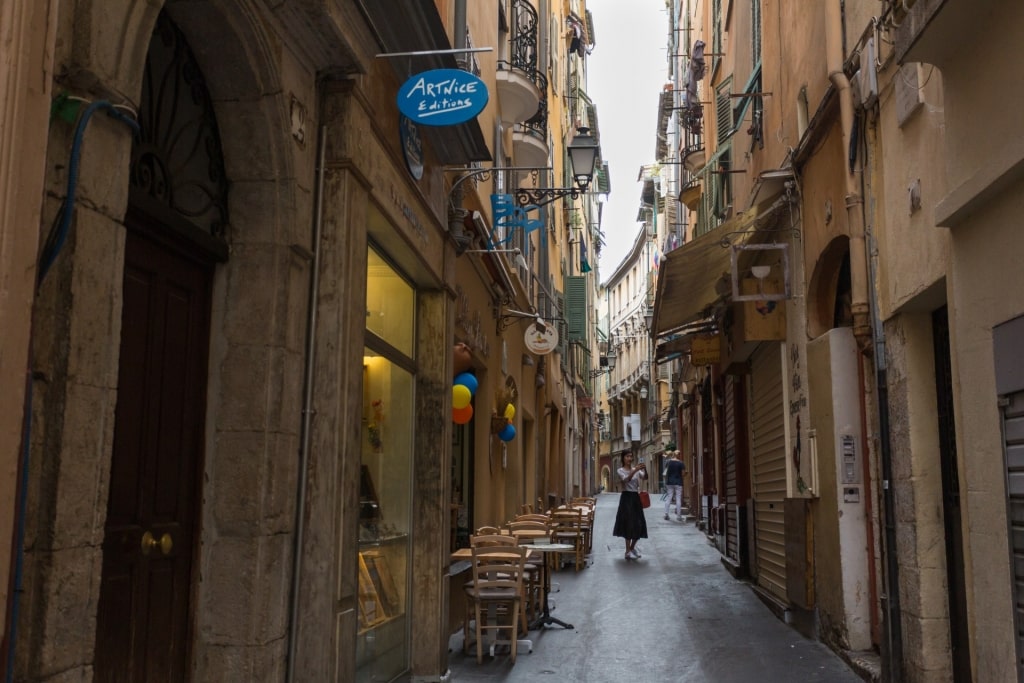
Old Town, Nice
One of the best things to do in Nice to ease yourself into France’s historical timeline is to stroll around the Old Town (Vieille Ville).
The narrow streets here—with tall residential buildings hemming them in—will guide you past old churches, the Palais Lascaris’ musical instruments museum, and the Baroque Sainte Reparate Cathedral, or Cathédrale Sainte-Réparate, consecrated in 1699. Sainte-Réparate features a dazzlingly ornate façade.
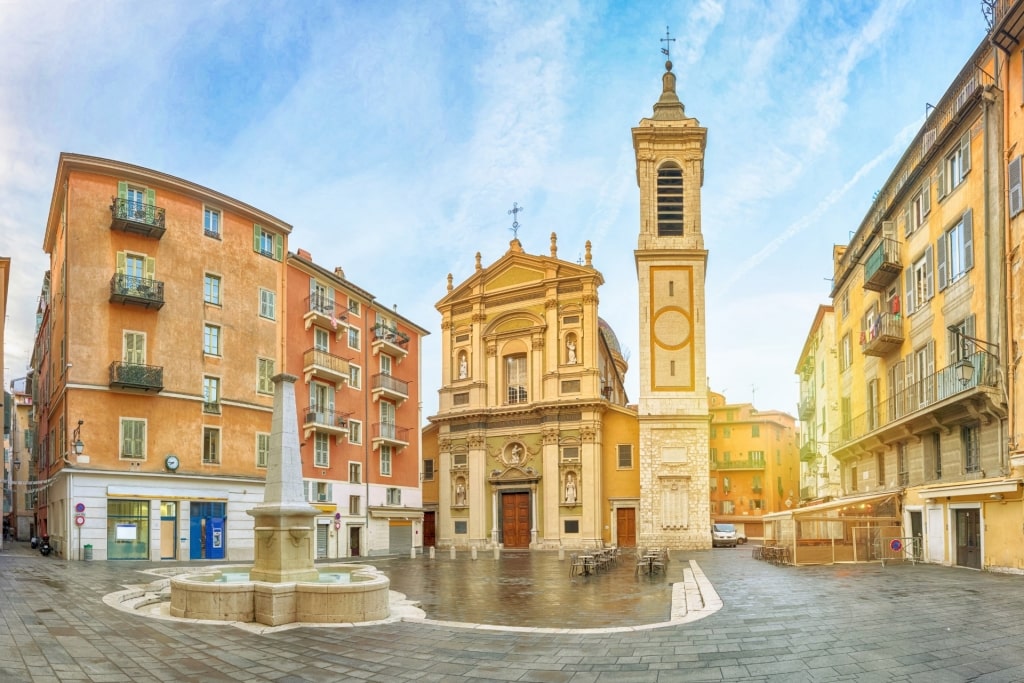
Rossetti Square in Old Town, Nice
The picturesque Rossetti Square is the central meeting point of Nice; an inviting locale you’re bound to pass through.
And while the Old Town will bathe you in its delightful history, a visit to a few other sites, like the Russian Orthodox Cathédrale Saint-Nicolas de Nice, commissioned by Tsar Nicholas II, will help keep your journey through time rolling along.
The Palace of Versailles, Paris

Palace of Versailles, Paris
The fabled Palace of Versailles, just west of Paris, was originally the chateau and hunting lodge of King Louis XIII. It was transformed by his heir, Louis XIV, known as the Sun King, during the 17th century into a grand palace and expansive baroque estate.
The grounds contain lakes, gardens, the Grand Canal, the Théâtre Gabriel Royal Opera, the Sun King’s unimaginably extravagant Grand Apartments, the Galerie des Glaces (Hall of Mirrors), and many other wonderful attractions.
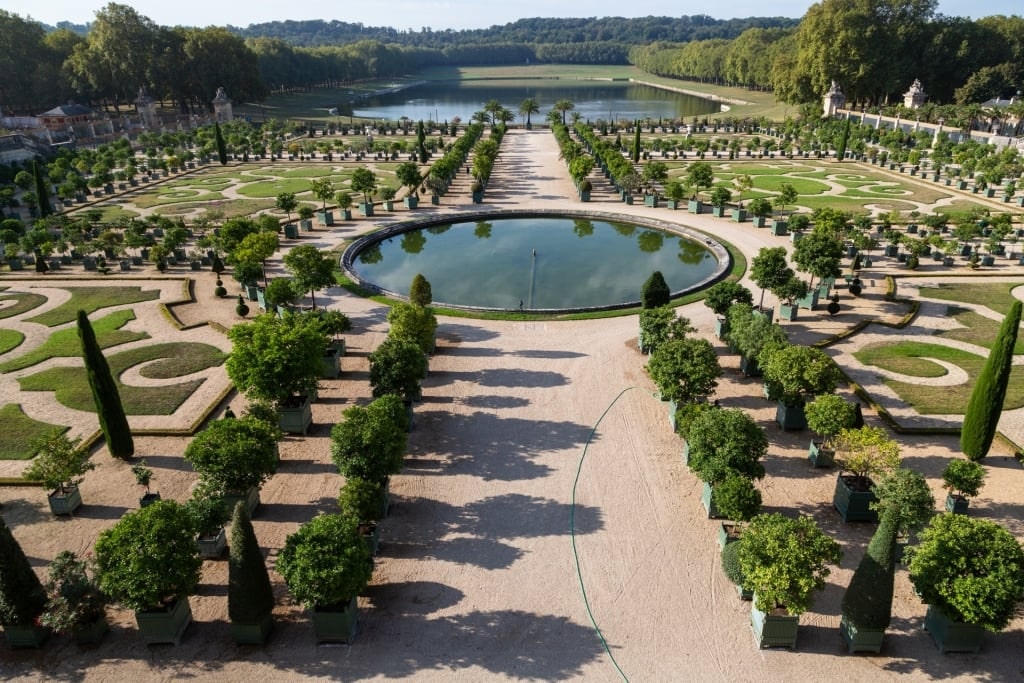
Palace of Versailles, Paris
You’ll also come across water features and magnificent fountains peppered around the complex, adding to Versailles’ majestic allure.
Notre Dame Cathedral, Paris
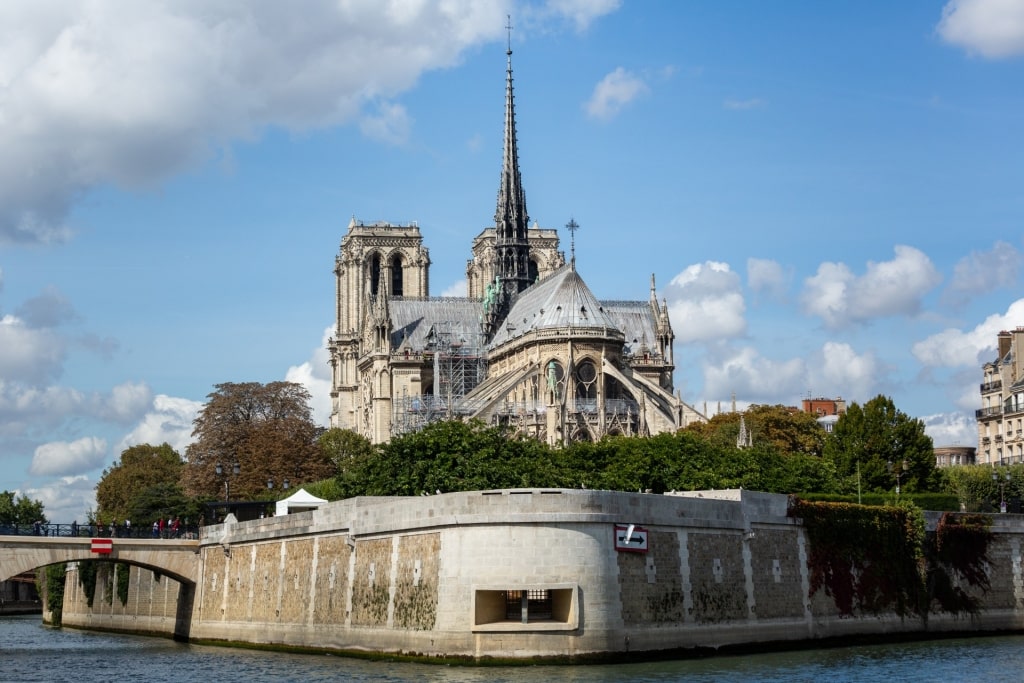
Notre Dame Cathedral, Paris
Notre Dame Cathedral (Our Lady of Paris) is an enduring icon that Paris is famous for. This gothic masterpiece, finished in the 14th century, is a UNESCO Heritage Site and an important stop for anyone traveling to the French capital, as well as for fans of gothic architecture.
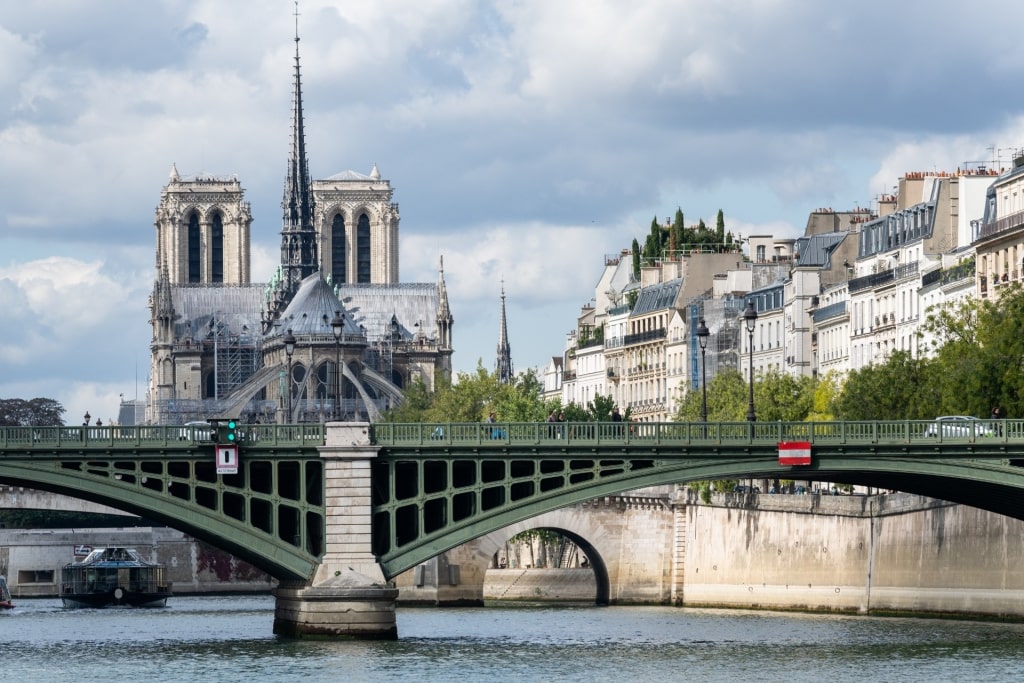
Notre Dame Cathedral, Paris
Notre Dame, located on the Ile de Ia Cité, an island in the middle of the Seine river, is currently under reconstruction following a devastating fire, but you can still get a good impression of its beauty and grandeur.
The cathedral also happens to be the home to the fictional hunchback Quasimodo, made famous in Victor Hugo’s 1831 novel Notre Dame de Paris, or in English, The Hunchback of Notre Dame.
Basilique Saint-Michel, Bordeaux
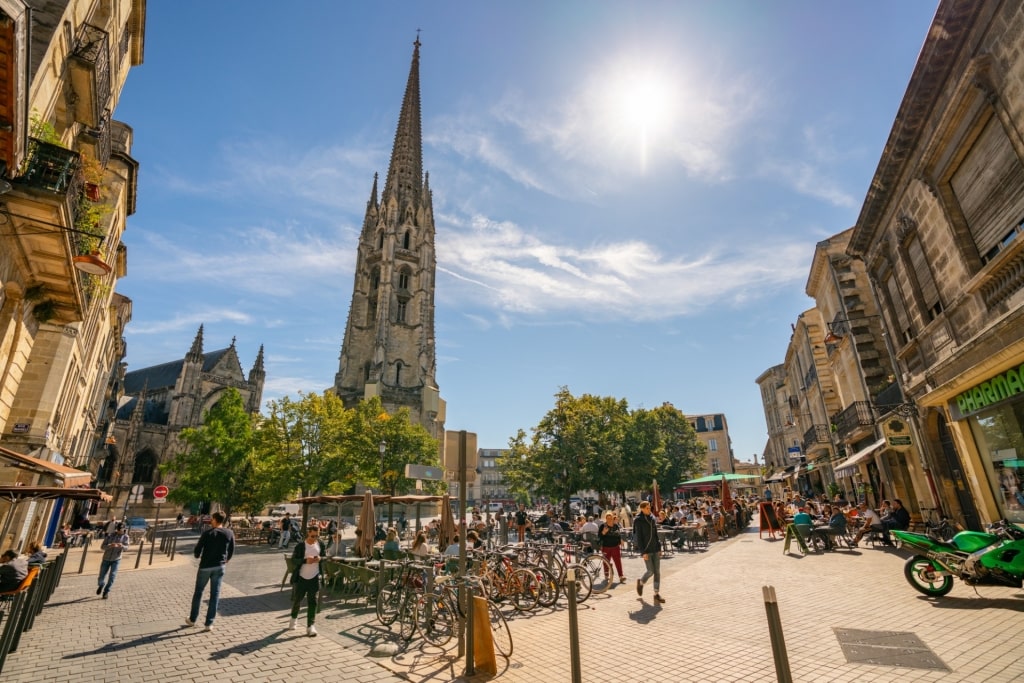
Basilique Saint-Michel, Bordeaux
The gothic Basilique Saint-Michel in Bordeaux is literally one of the loftiest historical places in France you can visit.
Its enormous bell tower numbers among the tallest bell towers in the country. Situated in the bustling Saint-Michel district, the French landmark took more than two centuries to complete, spanning the 14th, 15th, and 16th centuries.
The 374-foot-high bell tower was built separately from the basilica, sparing the church unnecessary strain from the tower’s immense weight. For spectacular views of Bordeaux below, climb up the 230 or so stairs to the top.
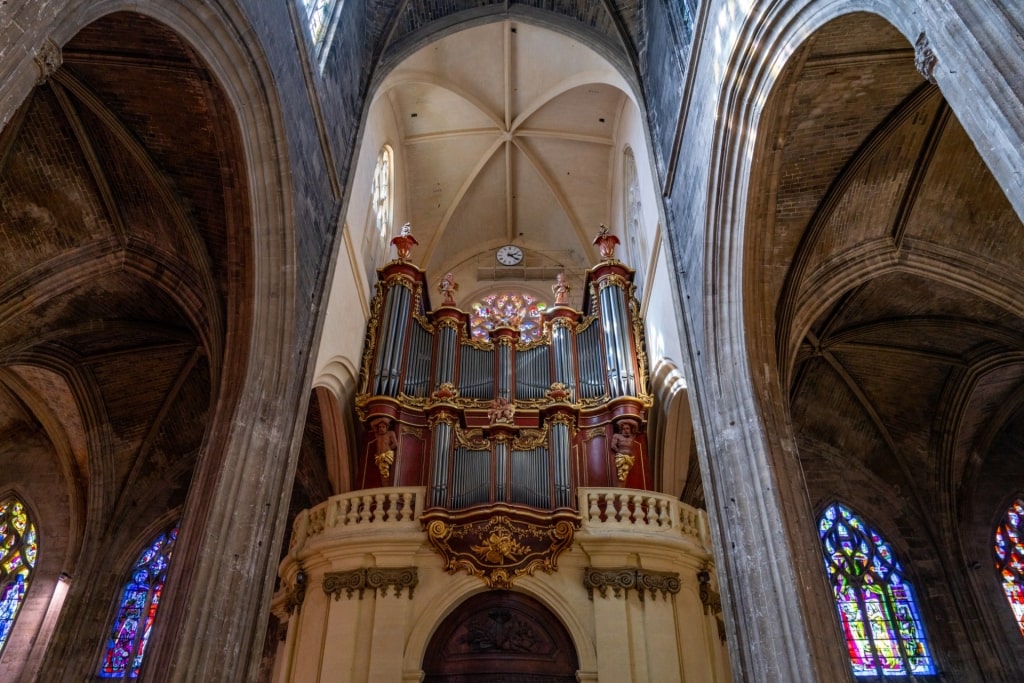
Basilique Saint-Michel, Bordeaux
Once you reach the tower’s summit, enjoy the panoramas, and then hike back down to check out the impressive Gothic pipe organ inside the basilica’s nave.
Read: Best Things to Do in Bordeaux
Vieux Port, La Rochelle
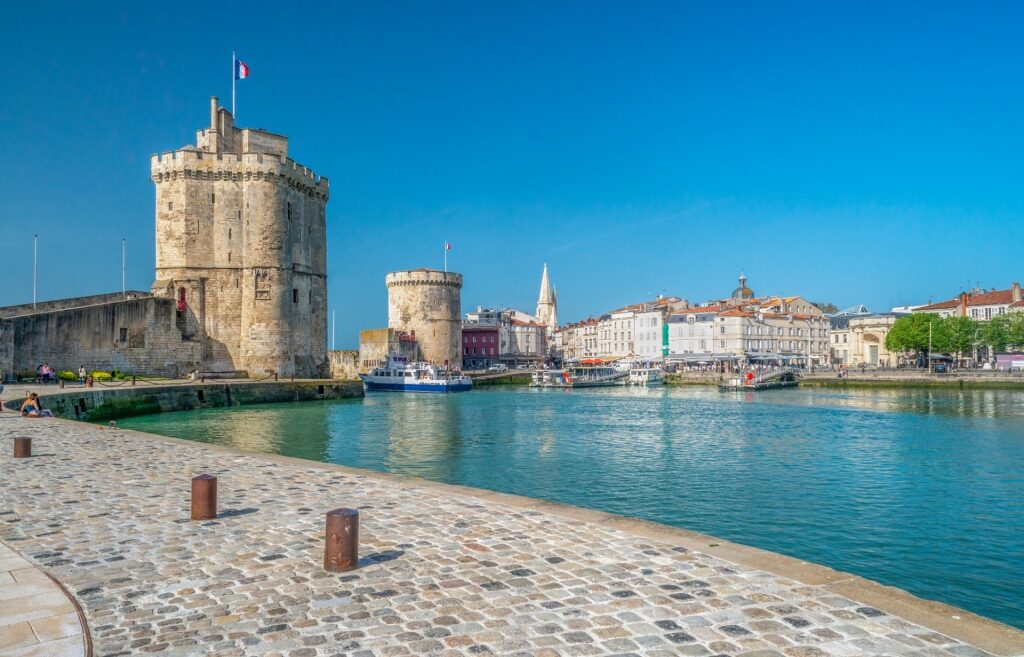
Vieux Port, La Rochelle
La Rochelle’s center and Vieux Port (Old Port), full of limestone buildings that reflect the sunlight from the sky and the light from the water, is known as the “White City” due to its brilliant hues.
You can thank the money coming in from the salt and wine trades over the years for transforming La Rochelle into the magnificent port city it is today.
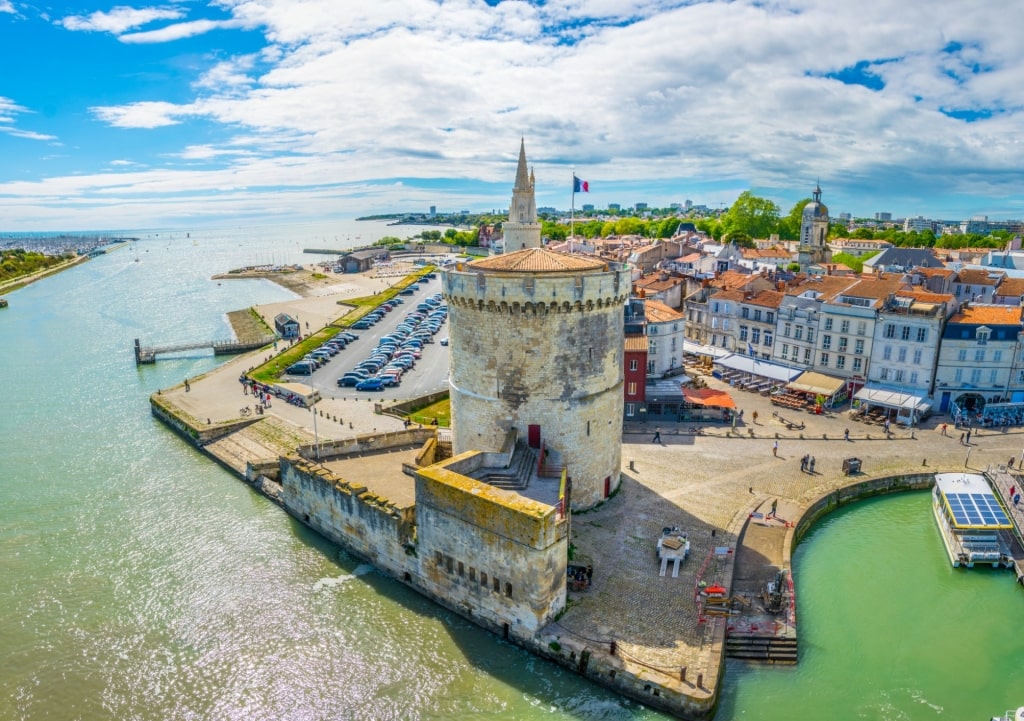
Vieux Port, La Rochelle
The 14th-century St. Nicolas Tower, the arresting Tour de la Lanterne (a former lighthouse with a large conical spire), and the Tour de la Chaîne have kept watch over La Rochelle’s harbor for hundreds of years.
A great way to become acquainted with the city is to ramble around the cobblestone streets in the Old Town, visit the towers guarding the port, then wander through the arcaded streets where traders have hawked their wares for centuries.
You can also follow the “Quebec Route,” which is a staged path that explores La Rochelle’s historical connection to Quebec, Canada.
The Eiffel Tower, Paris
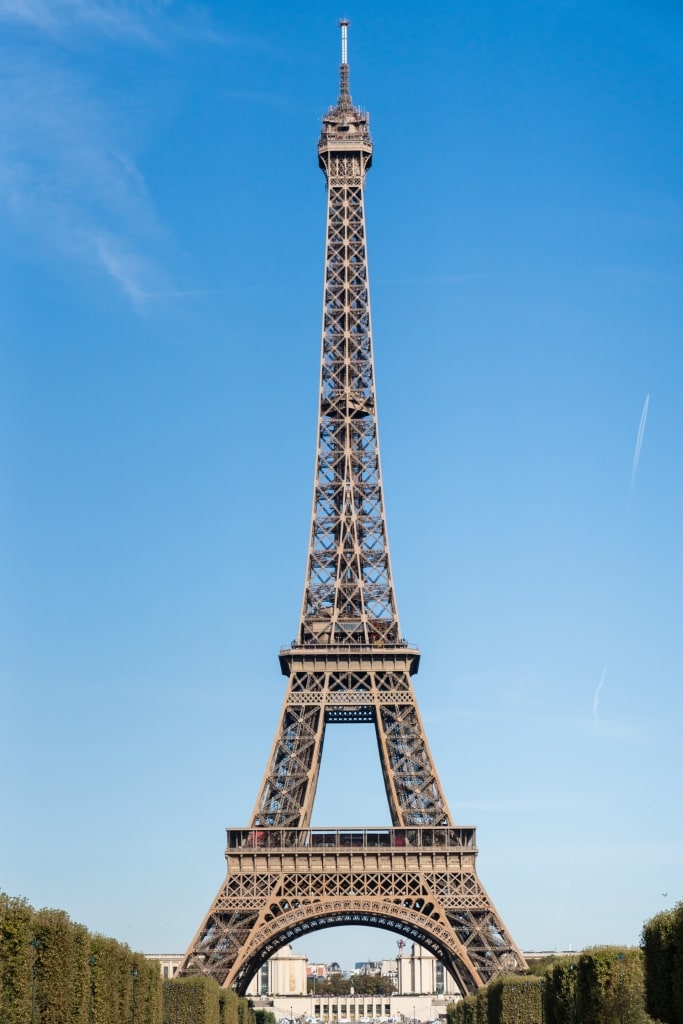
Eiffel Tower, Paris
The Eiffel Tower, along with the Arc de Triomphe, are perhaps the two most recognizable landmarks in Paris, and in France. The French engineer Gustave Eiffel designed the 1,083-foot-tall Tower for the Exposition Universelle, which took place at the 1889 World’s Fair, hosted in Paris.
Every year, millions of people visit the Eiffel Tower. Many ascend the three floors open to the public by climbing the stairs and riding the elevator for a chance to stand upon one of the most celebrated symbols that France is known for.
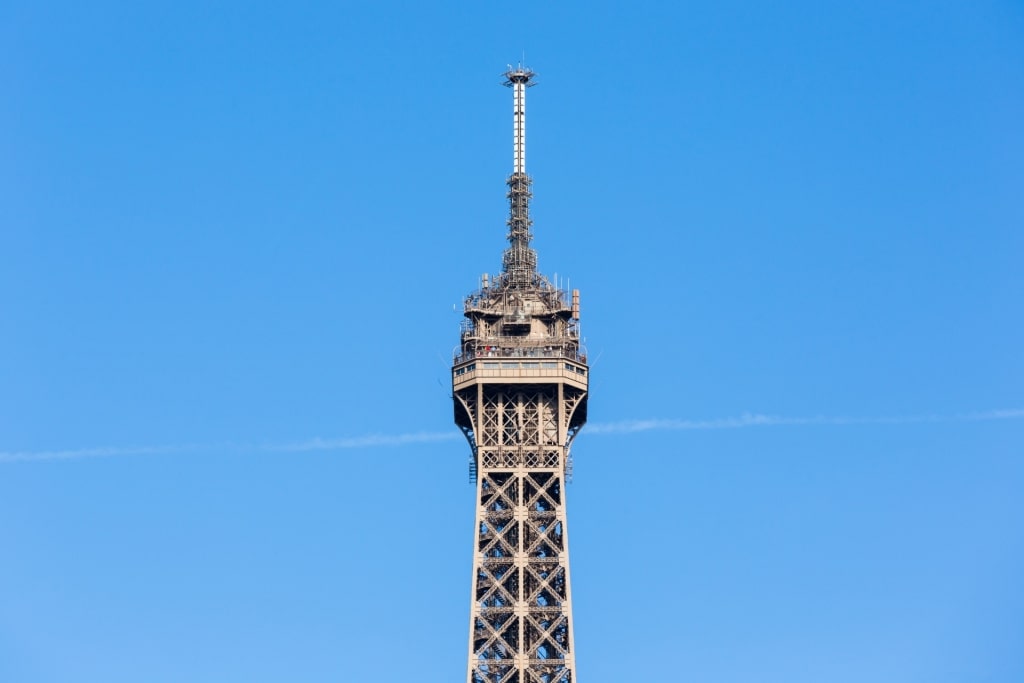
Eiffel Tower, Paris
The views from the top of the tower are exceptional, to say the least, and probably the best of central Paris, making the climb well worth your time.
Read: Best Views in Paris
The Arc de Triomphe, Paris
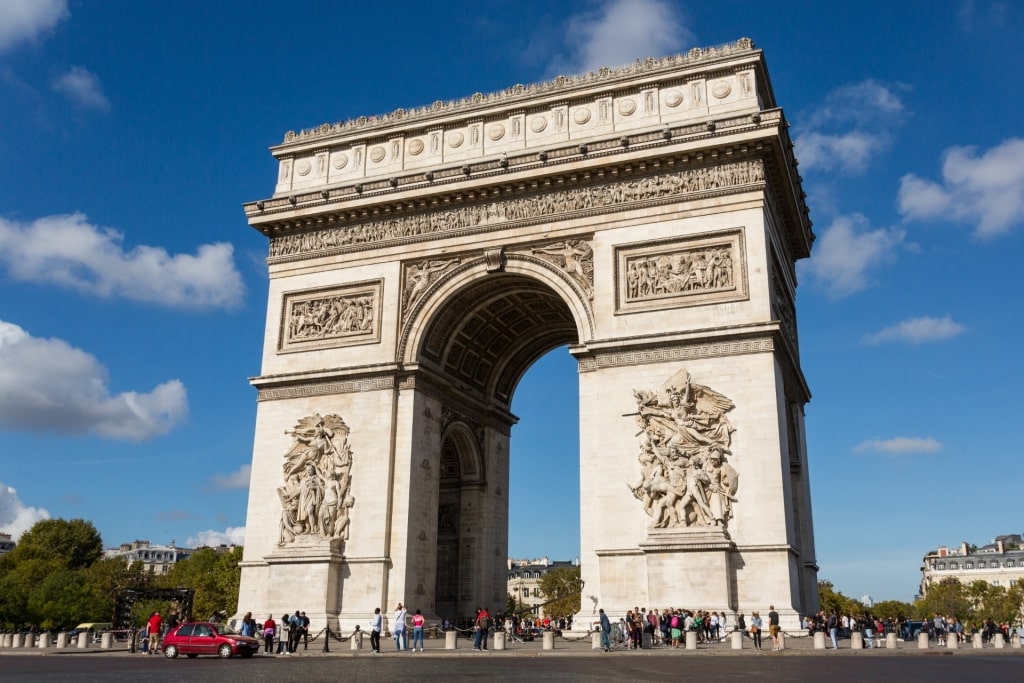
Arc de Triomphe, Paris
The Arc de Triomphe is Napoléon’s gift to Paris. Built over the course of 30 years from 1806 to 1836, it’s located at the former Place de l’Étoile, later renamed Place Charles de Gaulle.
The massive arch, surrounded by a large traffic roundabout, commemorates the heroes who have passed away in service of France. The Tomb of the Unknown Soldier from WWI rests beneath the arch.
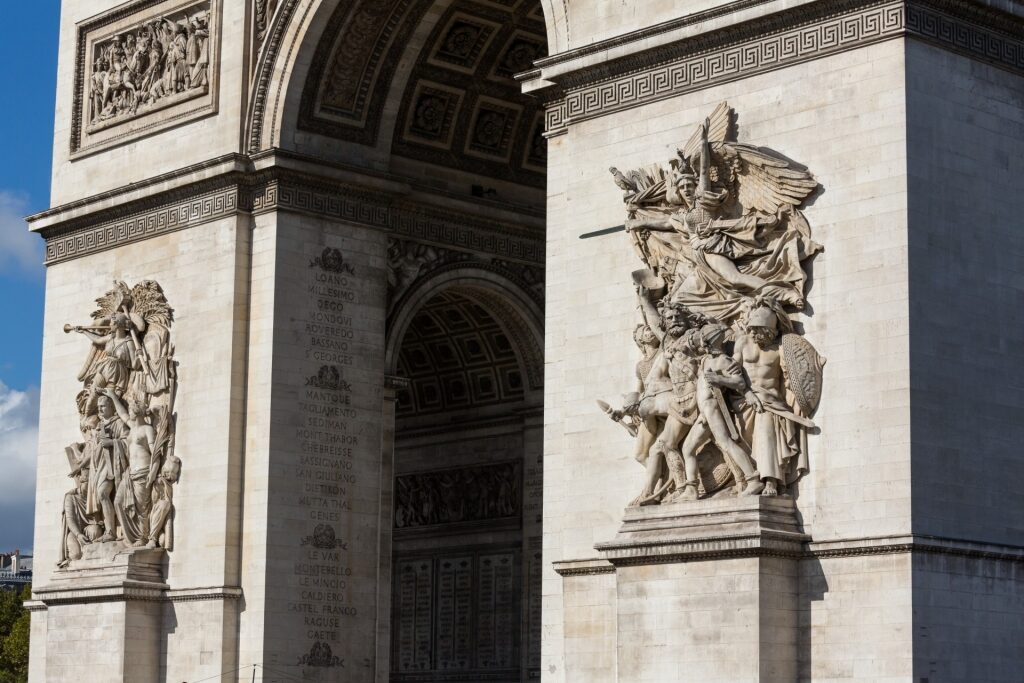
Arc de Triomphe, Paris
Once you arrive at the Arc de Triomphe, you can take in the attic, with 30 engraved shields honoring past military battles, plus the statuesque sculpture Le Départ des Volontaires, also known as La Marseillaise, which depicts the populace coming together as they head off to fight.
D-Day Landing Beaches, Normandy
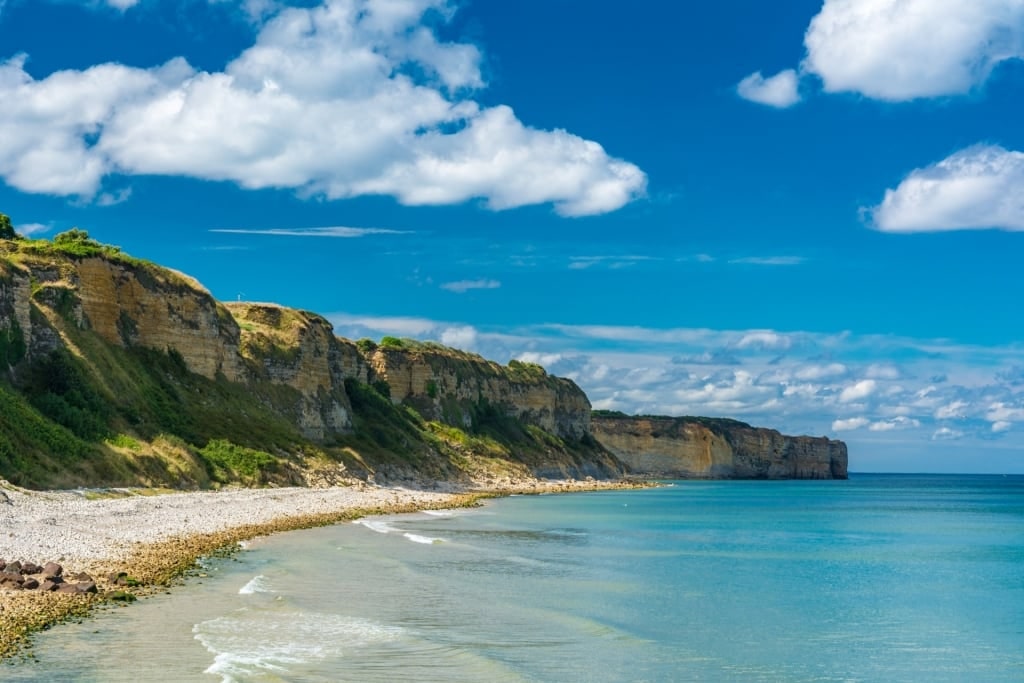
Omaha Beach, Normandy
For perspective on a slice of modern, deeply moving history, consider booking a tour to the D-Day Landing Beaches in Normandy, in Northern France.
D-Day, codenamed Overlord, took place on June 6, 1944. This fateful day saw the largest invasion force ever amassed and commenced Allied efforts to liberate France and Europe from Nazi occupation during WWII.

Bayeux, Normandy
Trips out to the D-Day landing beaches typically include excursions to the Utah and Omaha beachheads, and Bayeux, the first village to be liberated.
Many tours also visit the American Cemetery in Colleville-Sur-Mer, the cliffs of La Pointe du Hoc, where German machine gunners fired down upon American rangers from concrete bunkers, and Arromanches, where the British built a prefabricated artificial harbor to handle incoming reinforcements.
Le Suquet, Cannes
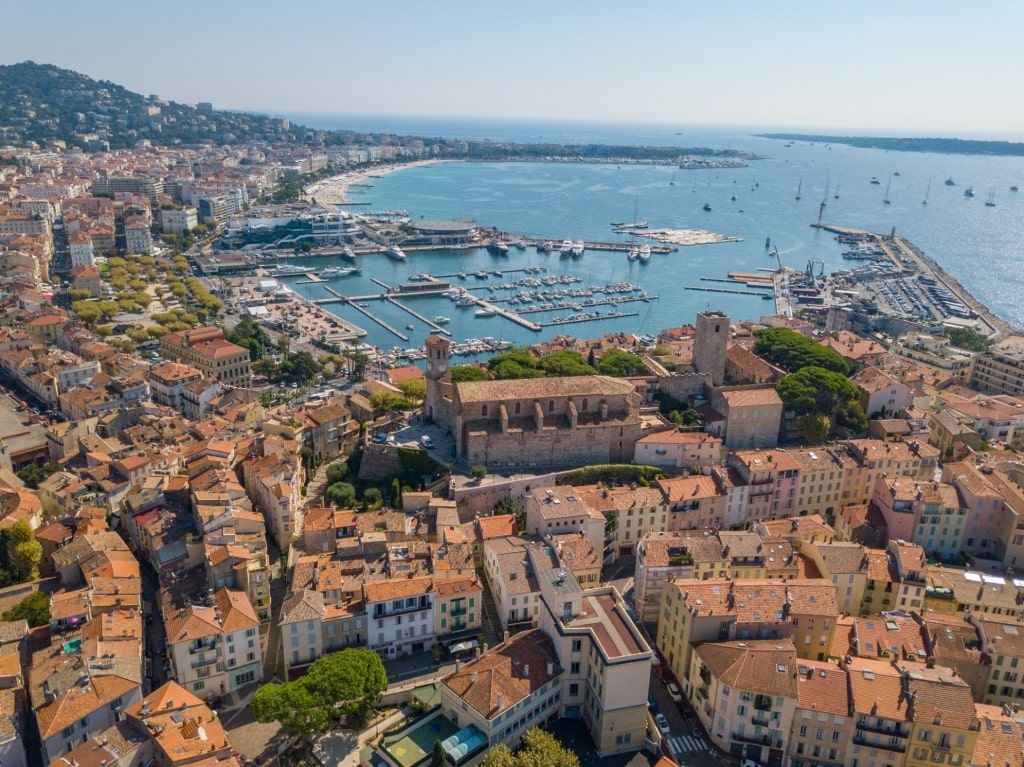
Le Suquet, Cannes
Le Suquet, Cannes, is an ancient hillside neighborhood, with origins reaching back to the Romans. Le Suquet features colorful indoor and outdoor markets like Marché Forville, divine vistas across the Bay of Cannes, and snaking cobblestone lanes.

Église Notre-Dame d’Espérance in Le Suquet, Cannes
Exploring Le Suquet is one of the best things to do in Cannes. Other sites of note here include the Église Notre-Dame d’Espérance, with its distinctive Renaissance clocktower, and the fortified medieval castle Musée de la Castre, which now houses 19th-century art, local relics, and a collection of musical instruments from around the globe.
Château de Roquetaillade, Mazères

Château de Roquetaillade, Mazères
Mazères occupies a limestone-rich area south of Bordeaux, where you’ll find the colossal Castle Roquetaillade, which, at first glance, seems impenetrable. Luckily, this French castle is open to the public.

Château de Roquetaillade, Mazères
Roquetaillade (the name means “carved in stone”) is an awe-inspiring medieval fortress, marked by its cylindrical towers and thick ramparts. The complex is, in fact, made up of two castles, and the lavishly adorned Saint Michael Chapel.
During the 19th century, Castle Roquetaillade benefited from some beautifying enhancements, thanks to the efforts of the architect Eugène Emmanuel Viollet-le-Duc.
Art nouveau embellishments, along with some Moorish-style ornamentation, gave the interior of this austere-looking stronghold some decorative pizzazz.
Palais des Papes, Avignon
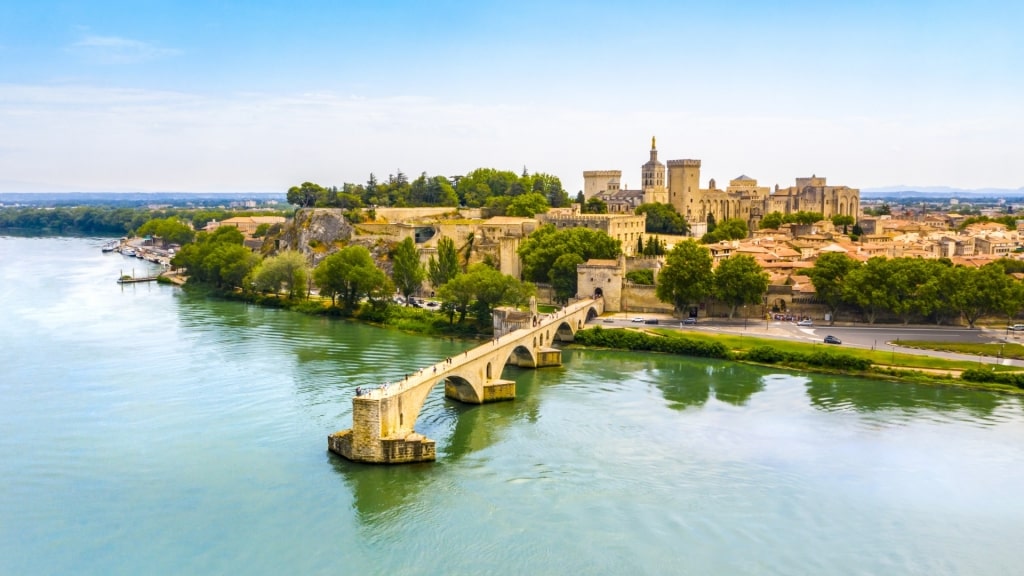
Palais des Papes, Avignon
The beautiful French walled city of Avignon is home to Palais des Papes, a UNESCO World Heritage Site plush with history related to the Catholic Church and the Papal Schism that began in the late 1300s.
The Popes’ Palace, built by Pope Benedict XII and Pope Clement VI, saw nine popes living here before the seat of the supreme pontiff reverted to Rome. Its sheer grandeur makes this one of the most impressive historical sites in France.
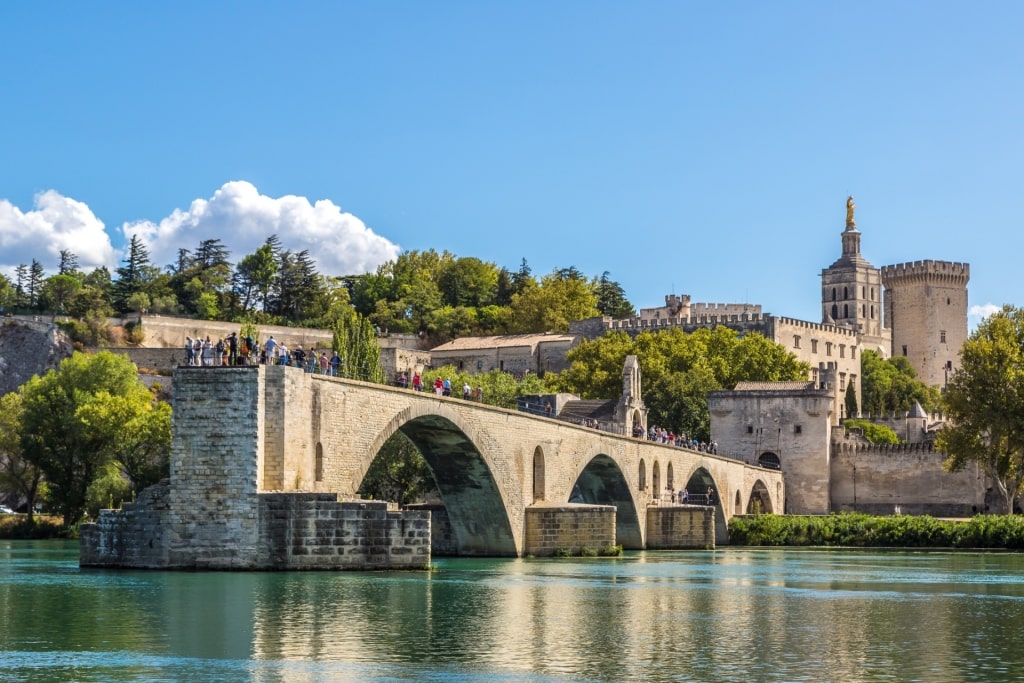
Palais des Papes, Avignon
In fact, the Palais des Papes, which includes the Palais Vieux (Old Palace), and the sumptuously decorated Palais Neuf (New Palace), is the largest gothic palace on the planet.
You can visit the papal apartments, the Clementine Chapel, different ceremonial rooms, the Grande Audience Hall, as well as Avignon Bridge, or Pont Saint-Bénézet, during your tour of the palace and its corresponding estate.
Château de Vincennes, Paris

Château de Vincennes, Paris
One of the most noteworthy historical sites near Paris is the Château de Vincennes, which boasts a massive central turret that’s easy to spot from a distance.
This former medieval royal residence and former prison lies next to the verdant Bois de Vincennes Park.
Château de Vincennes features a dry moat, a large keep, and imposing ramparts, perfect for scrambling around. As you move across the walls and grounds, you can imagine what life must have been like for the different monarchs who stayed here as they charted the political fortunes of France.
Old Town & Vieux Port, Marseille
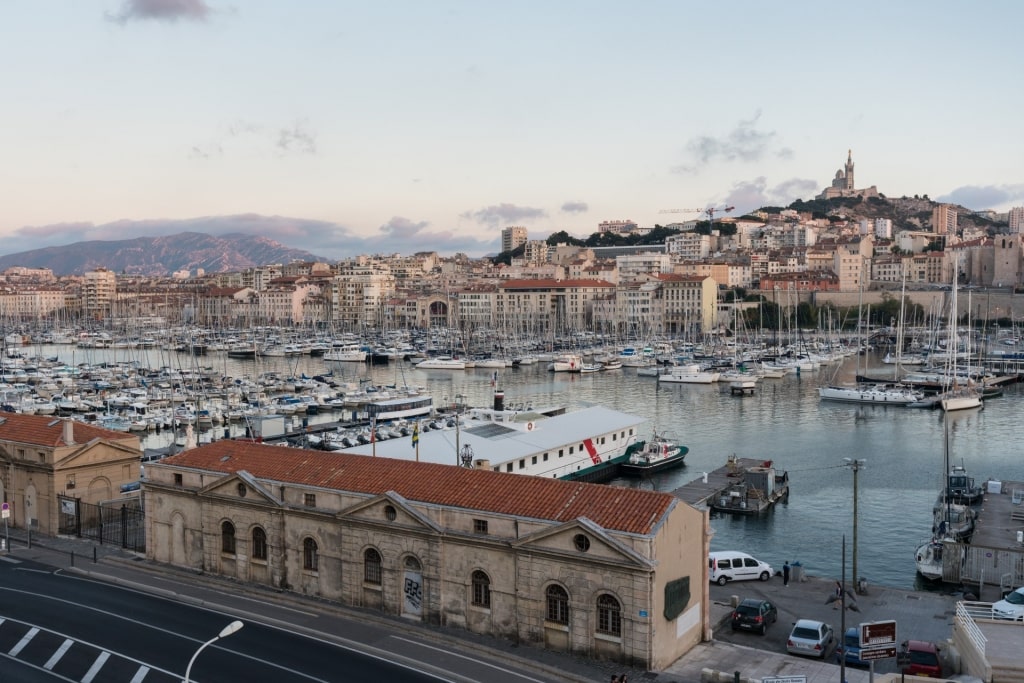
Vieux Port, Marseille
Marseille’s Vieux Port, along with its Le Panier Old Town, serve as windows into the region’s turbulent past. And despite the Nazis’ best effort to destroy a large swathe of Le Panier, you’ll still find plenty here to transport you back in time.
The Old Port and the disused Phare de Sainte Marie lighthouse speak to the region’s Greek, Roman, and maritime roots, and the city’s importance as a trading hub. One of the best things to do in Marseille is to stroll around the harbor to become better acquainted with the city’s historical character.

Vieille Charité in Old Town, Marseille
Le Panier’s three-story Vieille Charité gallery, designed by the architect Pierre Paul Puget, dates back to the late 16th century.
Vieille Charité, with its domed roof, is a noble-looking structure that houses a cultural center and several different museums, including one museum dedicated to archaeology, and another to African art.
The Maison Diamantée, also in Le Panier, was built by a wealthy merchant and features a façade blanketed in raised diamond-pattern stonework. The pinkish Daviel Pavilion is another fascinating edifice of note you should stop to admire as you walk around the Old Town of Marseille.
The Catacombs of Paris

Catacombs of Paris
The Catacombs of Paris descend five levels, down 131 steps, into the tunneled underworld of the city. In total, there are more than 200 miles of excavated tunnels below the French capital.
The catacombs have served different purposes over the years, many of them grisly. They were used to store the bodies of unfortunate souls who fell victim to the guillotine, like Robespierre, and as a depot for corpses from overflowing cemeteries. Approximately six million people lay entombed in these vast crypts.
A tour of the catacombs will take you down a spiraling stairway to visit spots like the Port-Mahon corridor, with sculptures by François Décure, along with the underground ossuary, where you’ll be able to view the largest collection of human bones you likely ever see in your life.
Saint-Paul-de-Vence, Alpes-Maritimes
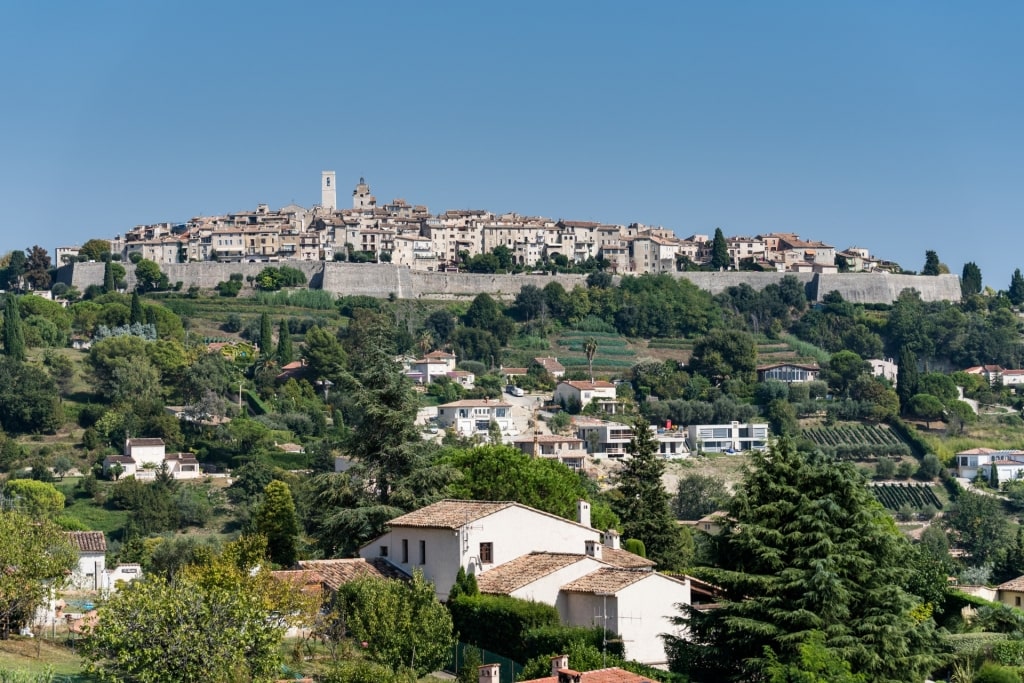
Saint-Paul-de-Vence, Alpes-Maritimes
For a bit of art-focused history, consider spending an afternoon exploring the fortified hilltop village of Saint-Paul-de-Vence, one of the best places to visit in the South of France.
Saint-Paul-de-Vence, a former border town to the Duchy of Savoy, received its defensive walls in the 13th century.
Today, the town, set out on a rocky outcrop, retains some of its history in its Tour de l’Eperon tower, once part of the medieval defensive walls, and the Porte de Vence gate.
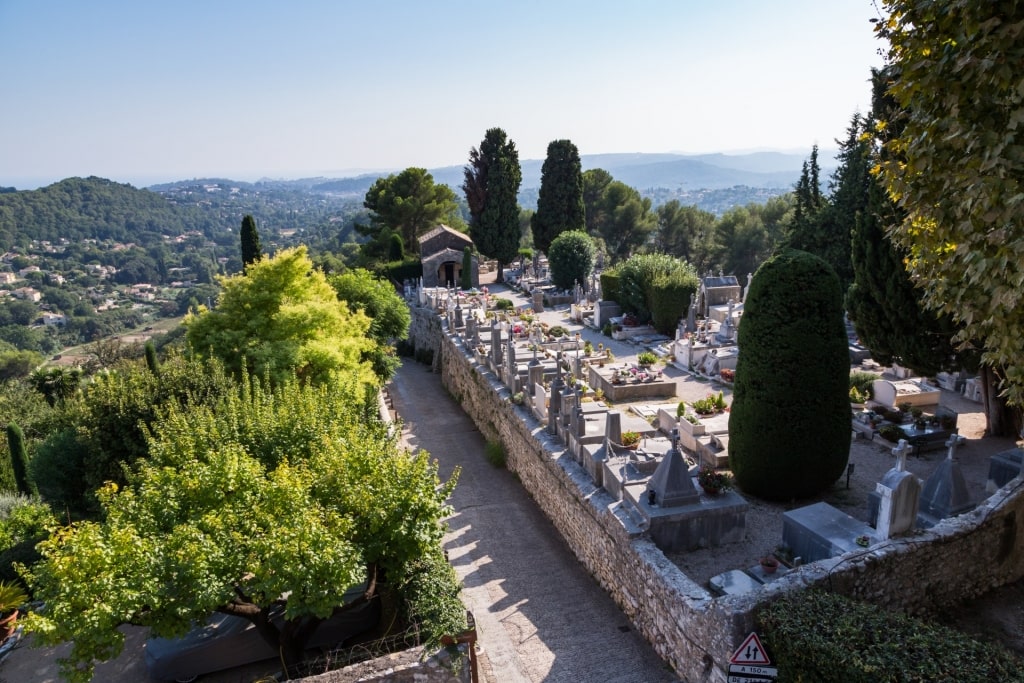
Cemetery of Saint-Paul-de-Vence, Alpes-Maritimes
During the early 20th century, Saint-Paul-de-Vence’s zigzagging alleyways and flower-filled streets became a celebrated artists’ commune, hosting the likes of Matisse, Picasso, and the American poet and novelist James Baldwin.
Marc Chagall is buried in the cemetery at the end of the village. You’ll still find the enchanting streets packed with galleries; this is a great place to shop in France for local art.
Toulon’s Opera House
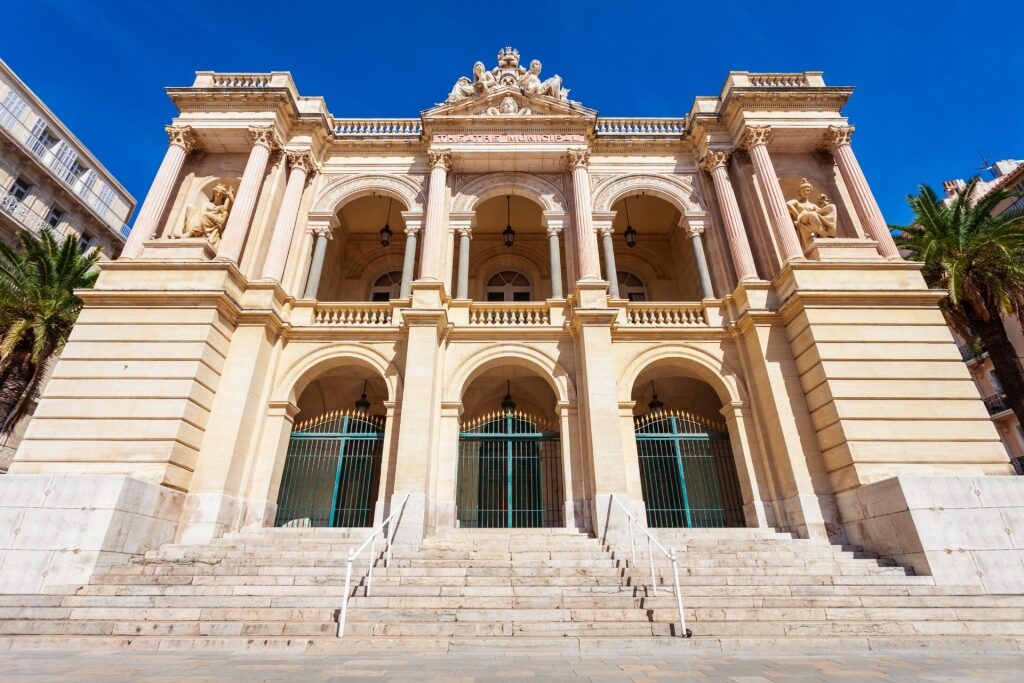
Opera House, Toulon
This temple to opera, also known as Le Grand Théâtre de Toulon, is celebrated for its sublime design and outstanding acoustics.
The building also clocks in as France’s second-largest opera house. The opera opened its doors in 1862, allowing audiences to gaze in awe at the decorative Napoleon III, or Second Empire artistic style, including the façade.
Léon Feuchère was the French architect behind the building’s design, completing the structure more than a decade before Paris’ slightly larger Palais Garnier.
Palais Garnier, incidentally, garnered worldwide fame as the main location in the novel The Phantom of the Opera.
The sumptuous interior of Toulon’s Opera House was built to impress. A guided tour will take you to the opera’s two terraces, with fine views of the Old Town, along with a chance to view the Napoleon III-style chandeliers and the Le Grand Foyer, plus the main hall, decked out in red, with an elaborately painted ceiling above.
Les Baux-de-Provence, Provence
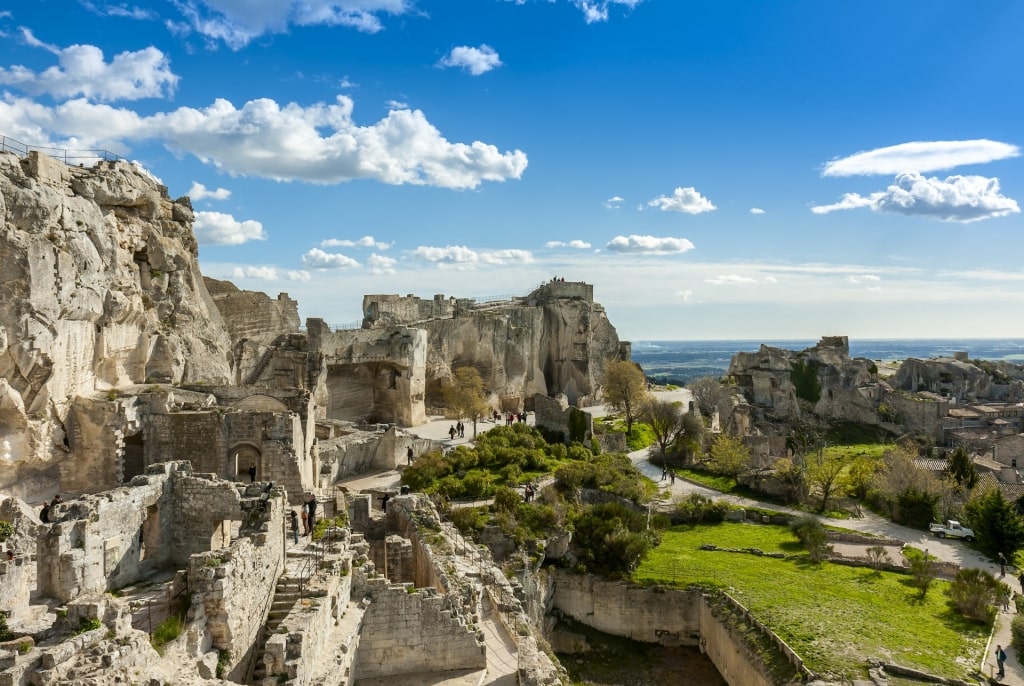
Les Baux-de-Provence, Provence
As you explore the pedestrian-only Les Baux-de-Provence, you could be forgiven for believing you’ve stepped back in time.
Le Château des Baux de Provence is a medieval hilltop village and fortress with sweeping views of the countryside below. The small French town, enclosed by ancient stone battlements, and regarded by many as one of the most beautiful villages in France, is full of historic monuments.
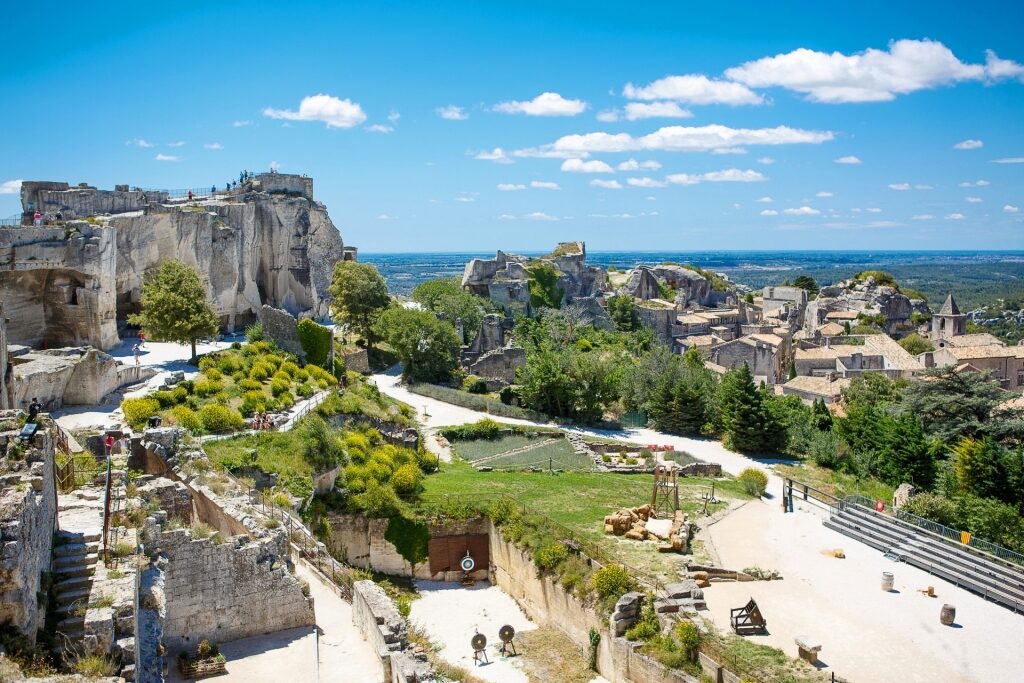
Les Baux-de-Provence, Provence
You can hike around the village and visit sites like the keep, and the Paravelle and Saracen defensive towers. Art lovers can drop by the bauxite Carrières De Lumières quarries, which now serve as a subterranean cultural center and art gallery.
During the warmer weather, reenactors recreate battle scenarios here to demonstrate the use of medieval weapons.
These reenactments will give you a vivid picture of how sieges and castle defenses were handled back when storming strongholds were still in vogue. Les Baux-de-Provence is a brilliant spot for history buffs interested in the Middle Ages.
Read: Insider’s Guide to Provence
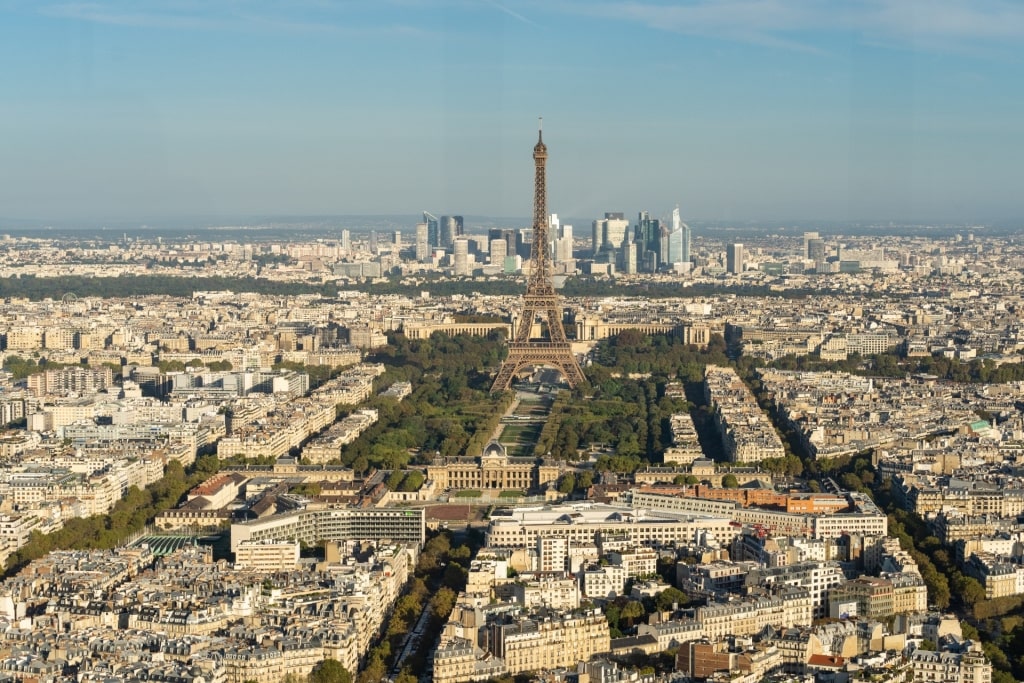
Paris
Learn more about the country’s historical sites on a cruise to France, where you can unlock some of the many secrets stemming from a colorful past.
